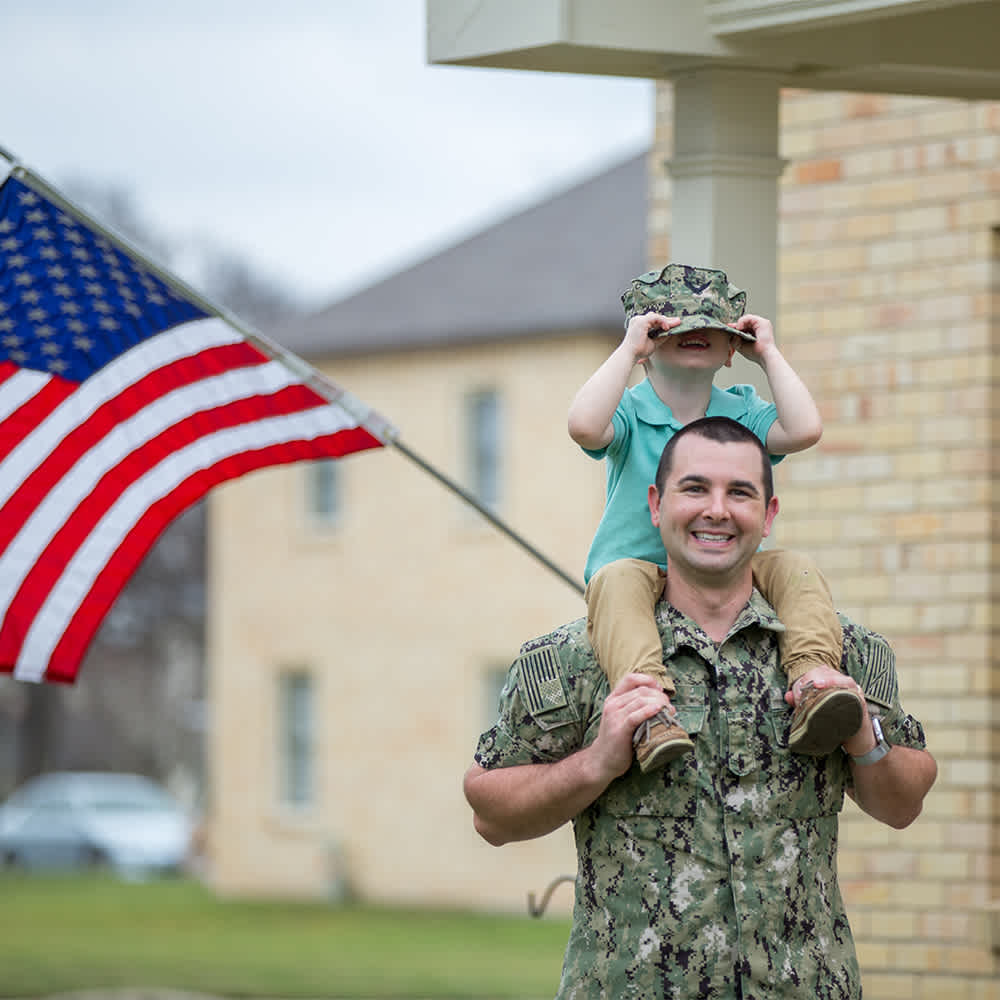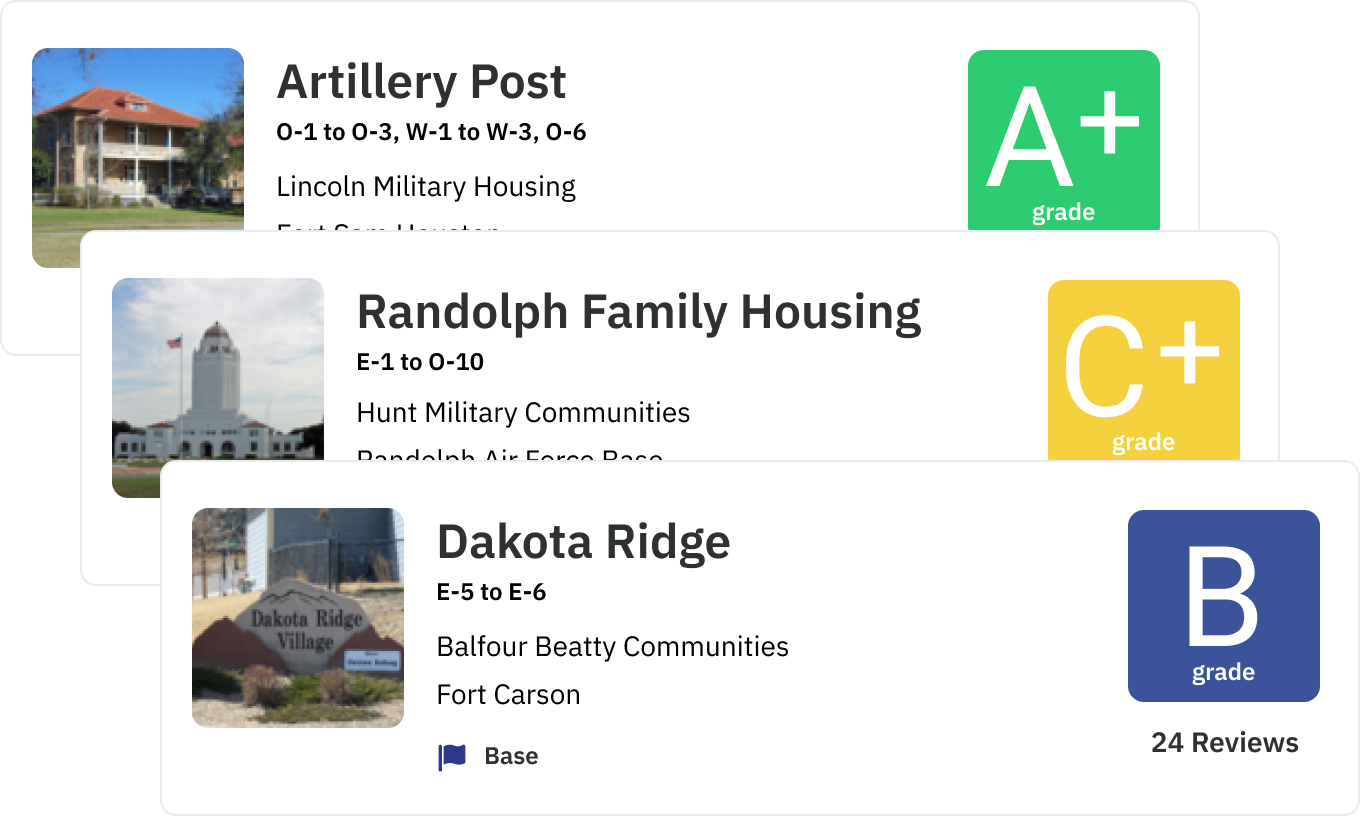PCS Q&A: Military Moving Tips to Save You Time and Money
by Lizann Lightfoot - April 24th, 2022
This blog and webinar were originally published in 2020. For the most updated PCS information, click here.
PCS season is here! Whether you're doing a full military move, a full personally procured move (PPM, also known as a DITY move), or a combination of the two, we have military moving tips to save you time and money.
Want more insight into your next duty station? Search our site to find reviews, area guides, and travel tips from military families just like yours. While you're there, please consider leaving a review of your current duty station to help even more military families!
Time-savers: Some people pre-pack their homes. How does it help during a PCS?
Pre-packing helps keep you organized when you are preparing to move, and also when you are unpacking. If you use flex totes for your clothing or wardrobe boxes with clothes on hangers, you can get things in the closet faster and get those boxes out of your home. It saves you time on the back end once you are trying to get settled. It also limits how much the movers have to touch all your things. They won’t individually wrap as many of your items.
You can always pre-pack by wrapping your household goods in saran wrap. In the past, the moving company wouldn't accept liability for your items if you packed them yourself. But US TRANSCOM changed that rule last year, and the moving company is now responsible for every box, even if the owner packed it.
Pro tip: Is your moving company reliable? Click here to access FREE moving company reviews, written by military families just like yours.
Best pre-packing tips for military families preparing to PCS
If you're doing a full military move, you aren't required to pre-pack anything. But doing so can save you time once you arrive at your new location. Pre-packing makes unpacking much easier. Yes, there is an investment up front, but it's worth the cost.
Use Ziplock Xtra Large or Jumbo size bags for clothing, sheets, linens, etc. They fit well into the moving company boxes, so you can take the flex totes out of the moving box, and get the boxes out of the house so the movers can take them away immediately. (Fewer boxes? Yes, please!).
Use garment bags or trash bags for hanging clothes. Pull up from the bottom, then tie at the top, and use zip ties to hold the hangers together. You can even color-code the ties for different parts of your closet, making setup a breeze.
Stuffed animals can get thrown into a trash bag and packed into a large box, so you can pull the trash bag out and keep them together until you are ready to unpack. Then get rid of the cardboard box immediately.
For knives and silverware, use saran wrap to wrap around the knife block or silverware drawer to hold everything in place.
Use a large Ziploc bag for the contents of a junk drawer or for kids with small toys. Keeping small items together means they won’t be jumbled around or lost.
Be detailed about box labels. You can hang a sign on each bedroom door with the label you want to use for that room ("Girls Room 1" rather than "Bedroom #3," for instance). Include acceptable labels like “Girls Room Decor” or “Kids Books” so that things aren’t just marked “miscellaneous.” Print your last name on the sheet, so the boxes all have your family name spelled correctly.
You can use color-coded labels or tape on boxes after they have been packed, which will help with the delivery stage.
How soon can you begin pre-packing before a military relocation?
It depends on the items. If it is winter clothes or holiday items, I can bag those up once the season is over. Stuffed animals or some toys can be bagged a few weeks in advance. But home essentials, like silverware and other kitchen items and bedding, will be boxed up the night before.
Make sure to label your "must-have" boxes clearly. This way, you'll be able to find them quickly on unloading day, giving you a head start on setting up your new home.
Ways to make delivery day faster and more streamlined
Use room labels and signs to help “direct traffic” for you, so you don’t have to answer all the questions. List major furniture pieces for each room, and clearly label the doorway, so the military movers know where to put things.
You want to spend your time checking the delivery sheet. Use a clipboard, write down numbers as they call them off, then take a break later and cross them off on your inventory sheet.
Let the moving company take as many boxes with them as possible on unloading day. One adult should be opening boxes and getting big stuff out of the way quickly. Focus on getting high-value item boxes open so you can check those off and verify contents before the moving company leaves. Focus on unpacking the kitchen too, which usually has the most boxes and takes up the most space.
What to do with young children during move-in day
Doing a military relocation with small children isn't for the faint of heart. What you do with them on unpacking day depends on your options.
If you do not have a sitter, use outdoor toys or sidewalk chalk to keep young children busy. Try to wear your baby in a carrier so you can still use a clipboard and pen. You can also use electronics to distract kids: put a toddler in an empty bathtub with an iPad so they will be out of the way and safe.
There's no getting around it: military moves are easier without kids underfoot. If possible, try to drop your kids off with grandparents or at a friend’s house. If you are able to get into the spouse group before you arrive, you might be able to connect with someone who is willing to come over and help.
Let's talk about saving money. What are your best military moving tips to save money?
We all play the game of purging the house and trying to get under our weight allotment. If something no longer serves a purpose or you haven’t used it for a few years, get rid of it! If you haven't unpacked a box since your last PCS, it's probably time for it to go. You can have a garage sale and make extra money. (Let the kids set up a lemonade stand during the yard sale too!).
Yes, you can apply for advance DLA and use the government travel card, but moving is still expensive. Start saving money as soon as possible. Once you PCS and get stable, start saving up again for the next PCS. You will need some cash flow during the move.
We have all come to expect the claims process, but you're unlikely to get the full value of items replaced. You can save money by pre-packing valuable items together so you can see right away if they are damaged. You can also pre-pack these items and bubble wrap them carefully to keep them protected.
The moving inventory is the binding document of your move. If it isn’t on that inventory, then it basically doesn’t exist to the moving company. Verify that boxes are labeled correctly before your move. Have your own inventory of any special collection: electronics, games, valuables, etc. Don’t just leave boxes and inventory labeled “kitchen items.” Instead, it should say “small kitchen appliances–blender, coffee grinder, bowls.”
What can military families do to avoid a large claim after a PCS?
Walk around and take pictures and create your own inventory before packing day. Take video of electronic items to show they are in working condition before being packed. Should you need to file a claim, these photos and videos provide the proof you need. Photograph furniture, high-value items, any shelves with an important item or collection, etc. Make your own inventory of anything expensive: electronic games, books on a bookshelf, etc.
Next, be involved with the process: this is your own move and your stuff! Walk around and talk with your movers. Get to know them as people. See how they are packing something, and speak up or ask questions if you think something should change.
A lot of issues come on moving day from the moving company codes. Know what the codes mean: scratched, bent, broken, stained, damaged, etc. It’s okay to write on there that you don’t agree with their assessment before you sign it. This protects you when you need to make a change.
For more information about filing a claim, click here.
How to make money on a PPM / DITY move
If you're willing to put in the legwork, a personally procured move (PPM, formerly called a DITY move) can be a great way to make money.
The more of your home you move yourself, the more money you will make. Hiring a moving company will always cost you more than packing yourself and getting friends to help you load.
Get packing materials for free–take them from other people who just completed a move. Use towels, blankets, sheets, etc. as packing materials. Couch pillows can pad other boxes. Get creative!
Know how much stuff you have and how big a truck you will need, or how many PODS you will need. If you can squeeze everything into one POD, you'll save yourself a lot of money.
If you’re hiring a company, read your contract. Know their business model and any hidden fees. Check the AMSA (American Moving and Storage Association) or IAM (International Association of Movers) websites to make sure they are certified. These are the two big moving associations that US TRANSCOM deals with, so check their site for legit companies. Some moving companies measure by weight, others by space, so make sure you know the limits and the fees for going over. Have room in your budget to cover any overages.
You can also access moving company reviews on PCSgrades, written by military families like yours.
Should you do a PPM / DITY move if you don't have much stuff?
If you can fit all your household goods into your car or rent a small trailer, you can move yourself as a PPM (Personally Procured Move) or you can get the military company to move you. Either way, you have to go to the transportation office or DPS and set up your details on Move.mil so that you can get reimbursed.
Choosing between a military move, a full PPM, or a partial PPM is entirely up to you. If you have the time and energy to pack and load yourself, a PPM is a great way to make some extra cash. But if you are limited on time, are pregnant or have small kids, or have other issues that limit your ability to move yourself, consider doing a military move.
Read more about choosing a PPM or a military move here.
How do you label or mark moving boxes?
I use the color-coded labels for rooms, and I also walk around and ask for details on each box so I can label the box more accurately. If they are boxes I know I want to open at delivery for a partial unpack, I will put a special color tape on the boxes so they know which ones to open first on arrival.
I use trash bags for hanging clothes, stuffed animals, or throw pillows. You can use scented bags or dryer sheets to help things smell fresh.
Get a personalized stamp with your name, cell phone number, and email. You can stamp it on every box, so if your box gets separated or sent to another family, it will be easy for them to contact you.
How do you keep mattresses and box springs clean during a military relocation?
You can get a cheap plastic mattress cover from Walmart, Amazon, or any other big box store. The moving company should use a large bag or box for your mattress and box springs, but a bag adds another layer of protection.
Tips for loading the moving truck without damaging items
Start with heavy items on the bottom. If you're pulling a trailer, the heaviest items should be at the front of the trailer (closest to your vehicle) to prevent sway. Then, stack lighter boxes on top.
You can always toss light items like pillows, blankets, or stuffed animals on the very top to keep items from shifting.
Be sure to use tie-downs to keep items from shifting during your move.
What about moving with gun safes or weapons?
Military moving companies can usually move those items for you. If it’s possible to move them with you (hand-carry), then you should absolutely do that so no one else will have control of them.
If you are moving an empty gun safe, you will need to open it and show the movers that it is empty before they pack it up. For most states, if your ammo is kept separate from your firearm and both are out of arm’s reach, then you can drive across the state line. But some states, like New Jersey, are strict and don’t allow them in the car, so know the state guidelines before driving your own firearms across the country.
Note that OCONUS moves have different requirements for weapons. Contact your local TMO to discuss laws in the host country and your options for moving weapons.
Will I get a full reimbursement for damaged items?
Yes, if military movers transported your items, and those items were damaged or destroyed, they should offer full replacement value, a repair process, or the cost of repairs.
You then get to decide whether to take the replacement value or accept a repair.
Learn more about the PCS damage claims process here.
Military moving tips for long moves with animals
Know your pet and what will work best when you are driving or moving with pets. On packing days, board your pets (anticipate that cost and put it in your budget.) This means the pets are taken care of and won’t escape the house or be in the way. It will be easier to clean your home without your pets in the way, too.
When driving, take frequent stops to walk the dog or check on your cat. Bring a water bowl in the vehicle with you and fill it at each stop. Tag team, only sending one adult into the bathrooms or rest stops at once so that the other adult can stay in the car with the animals and keep the heat or AC running. Set up a litter box for cats if they will use it during rest stops. Make sure to reserve pet-friendly hotels along the route.
At the gaining location, you may want to board your pets again or keep them isolated in a specific room with a clearly-marked sign so the movers don’t go in that room or open the door. Animals can experience anxiety too, so sometimes it’s worthwhile to discuss travel with their vet, and ask about sedation or medication options.
Will military movers pick up from more than one location, like a storage unit and our apartment?
Yes, if it is clearly marked in DPS, then you can schedule the move from two locations. Make sure you explain whether the storage area needs to be packed up in boxes, or whether it is already good to go.
Any military moving tips for a short-distance move?
You could let the military move you and set it up as a door-to-door move, where they pack up on one day and deliver it that same day. Or you could do a PPM and move yourself. It all depends on how quickly you can get into a house at your new location, and how much control you want to have over the move.
PCS resources
DTR is the Defense Travel Regulation. This is an important document for any move. Pay attention to Appendix B, which is the Tender of Service. This is the contract between the moving companies and the government, which spells out the expectations and responsibilities for the move. Attachment K1 is the “It’s Your Move” document. This is a TRANSCOM cheat sheet that shows you what you need to know, FAQs about different types of items like boats or firearms, your responsibilities, and your TSP’s responsibilities.
Liabilities Claims Business Rules addresses how the claims process works and what is considered high value.
Do you have more questions about your upcoming PCS? The PCSgrades website is full of helpful information to make your next move a little easier. And if you have military moving tips you want to share, be sure to leave a review or contact us and let us know!








